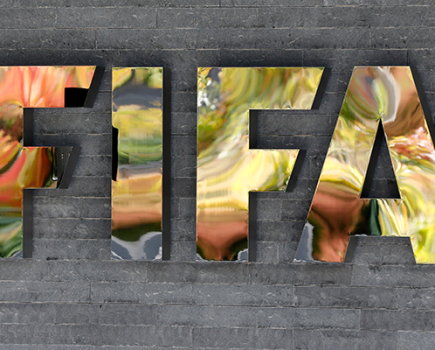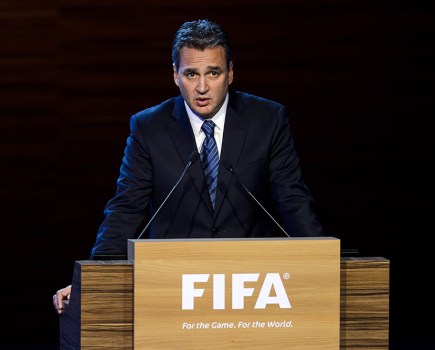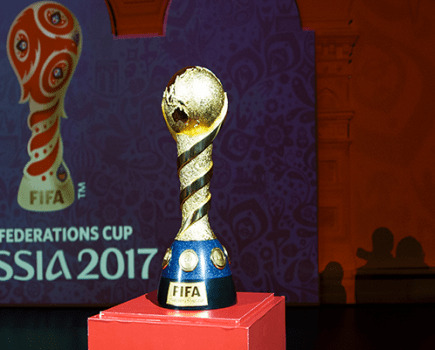 Tales of a comically bizarre episode during a meeting of the FIFA medical committee has supporters of the headscarf for Muslim women footballers fear that their project is being stalled.
Tales of a comically bizarre episode during a meeting of the FIFA medical committee has supporters of the headscarf for Muslim women footballers fear that their project is being stalled.
The International Football Association Board meets in special session in Kyiv on July 2, the morning after the Euro 2012 Final. Top of the agenda is whether or not to approve goal-line technology; next comes whether to approve a specially-designed headscarf for use in elite women’s football.
Both issues were discussed at length by the board at its annual meeting in Bagshot, south-west of London, at the start of March. The decision were the same: further testing should follow ahead of likely ratification in Kyiv.
However, while testing on goal-line technology is going ahead with a will, the headscarf issue appears in danger of being dumped in an administrative cul-de-sac.
FIFA’s medical committee is chaired by Belgian exco member Michel D’Hooghe and a key member is Professor Jiri Dvorak, the charismatic head of the world federation’s medical sector.
Sources close to the committee have reported back that the headscarf issue was discussed at a meeting before last month’s meeting of the full FIFA executive committee. ‘Testing’ of the headscarf apparently involved asking a secretary to walk around the room while attempts were made to pull the scarf from her head.
That image, together with the absence of any apparent ‘live’ match test, suggests both a lack of both serious intent and perception concerning the issue.
This perception may be unfortunate. Designers of ‘safe headscarfs’ from Holland and Canada met committee members along with two experts from an independent technical institute. Suggested changes to the designs – one using Velcro – are being undertaken but supporters of the headscarf have complained that the amendments were not precise enough.
Some members of the medical committee are of the view that it is sufficient to maintain the ‘cap’ which is already accepted by the board but which does not satisfy the cultural and religious susceptibilities of many women players in the Islamic world.
The headscarf issue – amending ‘only’ regulations since this does not concern the Laws of the Game – has been driven forward by Prince Ali of Jordan since his election as Asian vice-president of FIFA in spring of last year.
He has been supported by a vibrant worldwide social media campaign and by England’s FA chairman David Bernstein who ensured that the issue was discussed fully during the IFAB meeting in March.
Wearing of a headscarf in senior women’s football has been prohibited formally – though not always in practice – since the issue first arose in a junior league in Canada in 2007.
IFAB, made up of four FIFA representatives and one each from the British home associations, is a highly conservative body which has, down the years, been especially protective of the standard football kit.
The headscarf issue hit the international media glare in June last year when Iran’s women’s team were ‘hijabbed’ out of the Olympic qualifiers in Jordan. That was the day before Prince Ali officially took up his role on the FIFA executive committee.
Prince Ali has refuted vehemently any suggestion that permitting the headscarf would put football on a slippery slope of being pressed to pander to religious and/or political and/or cultural extremism. In his words: “This has been an opportunity to empower women in sport . . . a golden opportunity for the game.”
He believed that a change of attitude, which would empower many more women to play football in the Islamic world, had been “unanimously endorsed by all members of IFAB.”
Immediately after the IFAB discussion Alex Horne, general secretary of England’s FA, said: “In principle the IFAB is in favour of moving forward with the headscarf on a voluntary basis for women who wish to wwear them, subject to the fact that they must be health and safety compliant.
“FIFA will establish a working group including the medical committee to make sure the proposed headscarfs are safe and we expect to revisit that for a final decision on July 2. If it’s safe – and we have no reason to expect the technology we’ve seen, with a Velcro fastening won’t be safe – we’d expect to approve that on July 2 so it will be in time for next season.”
FIFA secretary-general Jerome Valcke had echoed Prince Ali’s comments about “a unanimous decision.”
Now, it seems, second thoughts may have arisen. Prince Ali will doubtless use the forum in and around FIFA Congress in Budapest later this month to re-energise his campaign.
FIFA, asked about any testing ahead of the IFAB meeting in Kyiv, said: “At the IFAB in March it was agreed that the FIFA Medical Committee would review the headscarves.
“In the same way that the IFAB will hear a report re: the GLT Phase 2 tests, and a final report re: the two year Additional Assistant Referees experiment before making their final decisions, the IFAB will make their final decision on the headscarf based on the feedback of the Medical Committee.
“It is not foreseen that any further information will be made available/be communicated before 2 July on the AAR and Headscarf.”






